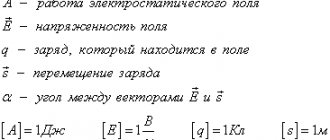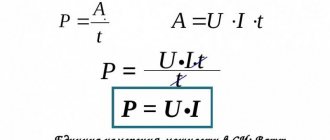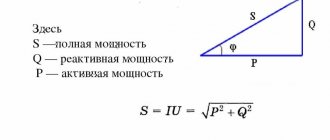What is the speed of current in the conductor? A trivial, if not rhetorical, question, isn’t it? We all studied physics at school and remember well that the speed of electric current in a conductor is equal to the speed of propagation of the front of an electromagnetic wave, that is, equal to the speed of light. But in those same physics lessons, we were shown a bunch of interesting experiments where we could see for ourselves. Let us recall at least the remarkable experiments with an electrophore machine, ebonite, permanent magnets, etc.
But experiments on measuring the speed of electric current were not shown even at the university, citing the lack of necessary equipment and the complexity of these experiments. Over the past few decades, applied science has made a huge leap forward and now many amateurs have equipment at home that even scientific laboratories did not dream of a few decades ago. Therefore, the time has come to begin to show experience in measuring the speed of electric current, so that the question would be closed once and for all in the best traditions of physics. That is, not at the level of mathematics of hypotheses and postulates, but at the level of simple experiments and experiments that are understandable to everyone.
The essence of the experiment to measure the speed of electric current is simple to the point of disgrace. Let's take a wire of a certain length, in our case 40 meters, connect to it a high-frequency signal generator and a two-beam oscilloscope, one beam, respectively, to the beginning of the wire, and the other to its end. That's all. The time it takes for an electric current to travel through a 40 meter long wire is about 160 nanoseconds. It is at this time that we should see a shift on the oscilloscope between the two beams. Let's now see what we see in practice
That is, as we have seen, there is no delay of 160 nanoseconds in our case. And it was in our case that we were unable to measure the speed of the electric current, because it turned out to be several orders of magnitude larger and cannot be measured with such instruments. Maybe our wires were advanced nanotechnology, or our electric current simply didn’t know that it had to stay for 160 nanoseconds in the wire? But it is what it is...
Due to the fact that only one experiment was carried out, it is too early to draw any conclusions. We hope that you will want to repeat this experience and share its results with us. We look forward to your video reports.
Source
Why doesn't current flow in sockets and wires at the speed of light? Or still...
Any person who understands physics will say that the speed of electric current is equal to the speed of light and is 300 thousand kilometers per second. On the one hand, he is 100% right, but there are nuances.
With light, everything is simple and transparent: the speed of flight of a photon is equal to the speed of propagation of a light beam.
With electrons it is more difficult. Electric current is very different from visible radiation. Why is it believed that the speed of photons in a vacuum and the speed of electrons in a conductor are the same? The statement is based on actual results. In 1888, the German scientist Heinrich Hertz experimentally established that an electromagnetic wave travels in a vacuum as quickly as light. But can we say that electrons in a conductor fly at the speed of light? We need to understand the nature of electricity.
Measuring and finding
Voltage is denoted by the letter U. The parameter is equal to the ratio: U = A / q, where: A is the field work performed to transfer q from one place to another, q is the charge value. From this formula you can obtain the dimension for measuring the unit of voltage. In physics, it is customary to calculate work in joules [J], and the amount of charge in coulombs [C].
Therefore, the parameter is measured by the ratio [J/C]. But this is such an important electrical quantity that they chose not only its own designation for it, but also the name of the unit of measurement - volts. The international designation uses the symbol V (volt). One volt represents the voltage between points in an electrical circuit at which one joule of work is done by the field to transfer a charge of one coulomb.
Since a physical quantity exists, it means there must be a device designed to measure it. This type of meter is called a voltmeter. In the diagram it is indicated by a circle and the symbol V inside it. It should be noted that, depending on the value being measured, more accurate devices, a microvoltmeter or a kilovoltmeter, can be used.
The meter is always connected in parallel to the points being measured. In this case, the positive terminal is connected to the positive part of the circuit, and the negative terminal to the negative part. When measuring, the voltmeter does not affect the electrical parameters. This is due to the fact that the device has a high internal ohmic resistance and practically no current flows through it.
It should be noted that there is alternating voltage and constant voltage. The first is so called because it constantly changes sign over time. This is due to a change in the direction of movement of charge carriers. Alternating voltage, unlike constant voltage, is described by a function. The most commonly used is sinusoidal. The formula for calculating it looks like this: u (t)= Um * sin (wt+f), where Um is the maximum amplitude, wt is the frequency, f is the angle between the harmonic signal of voltage and current.
The device used to visually observe the waveform is called an oscilloscope. They can measure voltage, depending on the model, up to gigahertz. The device can be analog, digital and strobe. An oscilloscope is considered a device for professionals and is used for electronic devices.
What is electric current?
From the school physics course it is known that electricity is a flow of electrons moving in an orderly manner in a conductor. While there is no source of electricity, electrons move chaotically in the conductor, in different directions. If you sum up the trajectories of all charged particles, you get zero. Therefore, a piece of metal does not give an electric shock.
If a metal object is connected to an electrical circuit, all the electrons in it will line up in a chain and flow from one pole to the other. How quickly will streamlining happen? At the speed of light in a vacuum. But this does not mean that the electrons flew from one pole to the other as quickly. It's a delusion. It's just that people are so used to the idea that electricity travels as fast as light that they don't think much about the details.
Physical meaning of the quantity
You can do a simple experiment. To do this, you need to assemble a circuit consisting of two lamps of different sizes connected in series. If they are powered from a current source, you will find that the large lamp shines brighter compared to the small one. In this case, the magnitude of the current for any section of the circuit will be the same, since there are no devices for accumulating charges in the circuit.
Therefore, it can be assumed that there is some difference in the operating mode of these two lamps. As it turns out, this difference is determined by a physical quantity. It is a characteristic of the field and is called electrical voltage. The parameter is measured in volts [V] in honor of the Italian physicist, chemist and astrologer who invented the galvanic cell, electrometer, capacitor and electroscope.
For every second, the same current flows through the lamps. It heats the coils so much that they begin to glow. As a charge moves along the circuit, it is subject to the force of an electric field, pushing particles through the spirals. We can say that a force acts on the body and work is done by it. Therefore, in a lamp that shines brighter, the electric force (electric current) does more work compared to the second light source.
A similar situation can be encountered when considering fluid flow. Electric current can be likened to the movement of water. In this case, can be drawn :
- liquid - charges;
- pipes - conductors;
- pump is a current source.
Let there be a tank from which water flows vertically down a pipe and spins a turbine. The height of the device is H. The liquid then enters a new tank, to which another smaller turbine is connected. Height of the second system h. Water circulation is ensured by a pump installed on the floor. The work that is done to rotate the turbines varies. That is, the same mass of water, depending on its location, expends different energy. Hence, by analogy, the electric field can be compared with the height of the pipes.
It turns out that in a hydraulic installation, first the work is done by gravity, and then by pressure. In an electric circuit, there is an electric field and an external force in the current source
. As experiments have shown, the ratio of work to the amount of charge that flows in the external circuit does not depend on its quantity. Thus, the voltage is always set between any two points of the electrical circuit and is an important characteristic.
Popular misconceptions about the speed of light
Another example of such a superficial perception is the concept of the nature of lightning. How many people think about what physical processes occur during a thunderstorm? For example, what is the speed of lightning? Is it possible to find out at what height lightning strikes rage without instruments? Let's deal with all this in order.
Someone might say that lightning strikes at the speed of light, and they would be wrong. A flash caused by a giant electrical discharge in the atmosphere spreads so quickly, but lightning itself is much slower. A lightning bolt is not a laser-like beam of light, although it is visually similar. This is a complex structure in an atmosphere saturated with electricity.
The stepped leader or main lightning channel is formed in several stages. Each step, tens of meters long, is formed at a speed of about 100 km/sec along the discharge threads of ionized particles. The direction changes at each stage, so the lightning looks like a sinuous line. 100 kilometers per second is fast, but it is very far from the speed of an electromagnetic wave. Three thousand times.
The experience of Mandelstam and Papaleksi
In classical theory, it is assumed that the movement of particles occurs in accordance with the laws of mechanics. In this case, the force of interaction between electrons is neglected. It is believed that upon collision with oppositely charged particles of the crystal lattice, all the energy previously received in the field is transferred to it.
Two radio physicists Mandelstam and Papaleksi assumed that since an electron has mass, it must also have inertia. That is, if you take any metal, set it in motion, and then suddenly stop it, then a directed movement of electrons should occur. Their experience was quite original. To carry it out, scientists prepared:
- coil;
- current source;
- telephone.
Briefly, the experience consisted of a simple action. Physicists applied current to the coils and then abruptly stopped the coil. The click heard in the telephone earpiece allowed them to judge the increase in current. From this they concluded both about the existence of mass in the electron and about the possibility of the appearance of an electric current without the participation of an electromagnetic field. In addition, it allowed us to assert the possibility of the occurrence of electric current outside a closed circuit.
Soviet scientists were able to qualitatively establish the existence of the phenomenon, but were unable to carry out quantitative measurements. The American Tolman and the Scot Stewart, interested in the discovered effect, improved the experiment and not only confirmed the experimental fact, but were also able to determine the value of the specific charge during sudden braking.
They used 500 meters of wire for their coil. Using sliding contacts, it was connected to the galvanometer and spun along its axis. The linear speed was achieved equal to 500 m/s.
To calculate the electromotive force, the formula was used: E = (1 / e) * ∫ F * dL, where:
- F—external force;
- L is the length of the conductor;
- e is the charge of the particle.
After integration, using the expression defining the force of inertia and Ohm’s law, the final calculation formula took the form:
q = (m * L * r / e * R) * dw, where: w - angular velocity of rotation. The ballistic galvanometer used allowed physicists to measure the e/m ratio. Experiments have shown that the specific charge value turned out to be 1.7 * 1011 C/kg. This proved that inertia causes particles to communicate. In this case, electrons participate in charge transfer.
Which is faster: lightning or thunder?
This children's question has a simple answer - lightning. From the same school physics course it is known that the speed of sound in air is approximately 331 m/sec. Almost a million times slower than an electromagnetic wave. Knowing this, it is easy to understand how to calculate the distance to lightning.
The flash light reaches us at the moment of discharge, but the sound travels longer. It is enough to detect the time interval between the flash and thunder. Now we simply calculate how far from us the lightning struck, using a simple formula:
L =T × 331
Where T is the time from the flash to the thunder, and L is the distance from us to the lightning in meters.
For example, thunder struck 7.2 seconds after the flash. 331 × 7.2 = 2383. It turns out that lightning struck at an altitude of 2 kilometers 383 meters.
Problem solving
Carrying out calculations helps not only to consolidate theoretical material, but also to learn the practical application of knowledge. Thus, the application of Ohm's law allows you to correctly calculate electrical circuits and select the required resistance. Here are some of the typical tasks designed for seventh grade students:
- Determine the voltage on the winding of the electric starter if, when a charge passes through it, the electric field does 10 joules of work. The field strength is 4 V, and the effective force is 8 N. In order to determine the voltage, you need to calculate the amount of charge. This can be done from the expression: E = F / q. Hence q = F / E = 8 N / 4 V = 2 C. Now you can use the formula: U = A / q. All the necessary data is known, so after substituting the values and calculating the answer should be: U = 10 J / 2 C = 5 V.
- Calculate the maximum voltage that can be applied to an electric lamp with a resistance of 500 Ohms if it is lit at full heat at a current of 0.5 amperes. According to Ohm's law, voltage and current are related by the formula: I = U / R. From it, voltage can be expressed: U = I * R = 0.5 A * 500 Ohm = 250 V.
- When transferring 240 C of electricity from one point in the circuit to another, 120 J of work is performed in 16 minutes. Find the voltage and current. The electric current can be calculated from the relationship: I = q / t, and the voltage using the formula: U = A / q. Substituting the original data, you can get: I = 240 C / 16 * 60 s = 0.25 A and U = 1200 J / 240 C = 5 V.
- What will be the current strength if 0.8 J of electricity is consumed in one second at a voltage of 4 V? To solve the problem, you need to remember how electric current and voltage depend on the amount of charge. By writing down the ratios and substituting one into the other, you get the formula: I = A / U * t = 0.8 J * C / 4 V * s = 0.2 A = 200 mA.
Thus, to solve problems related to electrical voltage, you need to remember several formulas and understand the essence of the process. But it is important to know the dimensions of quantities. Moreover, all calculations are usually performed in the International System of Units. You should also know that the speed of ordered movement of charge carriers depends on the action of the external electric field. And it is found as V = I / q * n *S, where n is the concentration (tabular value), q is the charge, S is the cross-sectional area of the conductor.
The speed of an electromagnetic wave is not the speed of current
Now let's be more attentive to numbers and terms. Using the example of lightning, we were convinced that a small incorrect assumption can lead to big mistakes. It is precisely known that the speed of propagation of an electromagnetic wave is 300,000 kilometers per second. However, this does not mean that the electrons in the conductor move at the same speed.
Let's imagine that two teams are competing to see who can get the ball from one end of the field to the other the fastest. A prerequisite is that each team member take several steps with the ball in their hands. One team has five people, and the other has one. Five of them, lined up in a chain, will play a pass, each taking a few steps in the direction from start to finish. A single person will have to run the entire distance. Obviously, five people will win, because the ball flies faster than a person can run.
It's the same with electricity. Electrons “run” slowly (their own speed of elementary particles in a directed flow is calculated in millimeters per second), but they transfer the “ball” of charge to each other very quickly. In the absence of a potential difference at the opposite ends of the conductor, all electrons move chaotically. This is thermal movement present in every substance.
If electrons moved in wires at the speed of light
Let's imagine that the speed of electrons in a conductor is still close to light speed. In this case, modern energy would be impossible in the form we are accustomed to. If electrons moved along wires, flying 300,000 kilometers per second, very complex technical problems would have to be solved.
The most obvious problem: at this speed, the electrons will not be able to follow the turns of the wires. Having accelerated on a straight section, charged particles will fly out tangentially, like cars that do not fit into a turn. To keep electrons flying at cosmic speeds inside energy highways, the wires will have to be equipped with electromagnetic traps. Each section of the wiring will become like a fragment of a hadron collider.
Fortunately, elementary particles move much more slowly and bare aluminum wires for power lines are quite suitable for transmitting energy over long distances
We hope that after reading this review, you found the answer to the question why current does not flow through cables at the speed of light and remembered something from the school physics course, and this, you see, is extremely useful at any age.
Source
Structure of metals
Being in a solid state of aggregation, metals have a crystal lattice . This is an ordered structure: each atom is in a strictly defined place.
But what particles will then ensure the flow of electric current? The fact is that there are positive ions (Figure 1). Free electrons constantly move in the space between these ions .
Figure 1. Crystal lattice of metal
Let's remember a little about what particles such as ions are. Under normal conditions, atoms are electrically neutral. Electrons carry a negative charge, and protons in the nucleus carry a positive charge. This charge is the same in modulus. Thus, in an electrically neutral atom, the number of electrons will be equal to the number of protons in the nucleus.
If an atom loses even one electron, it loses its electronic stability. Now the total positive charge of all protons in the nucleus is greater in absolute value than the negative charge of electrons. Such an atom is called a positive ion .
In this structure lies the answer to the question: “ Why is metal electrically neutral under normal conditions?” "
The negative charge of all free electrons is equal in absolute value to the positive charge of all lattice ions.
Note the fact that not all electrons in metals are free. Some of them remain associated with the nuclei of atoms, while the other part moves randomly between these atoms.
These electrons are initially found in the orbits furthest from the nucleus. They are weakly connected to the nucleus. Therefore, they can quite easily move from one atom to another, repeating this process many times. It is this movement that we call the random movement of free electrons .









